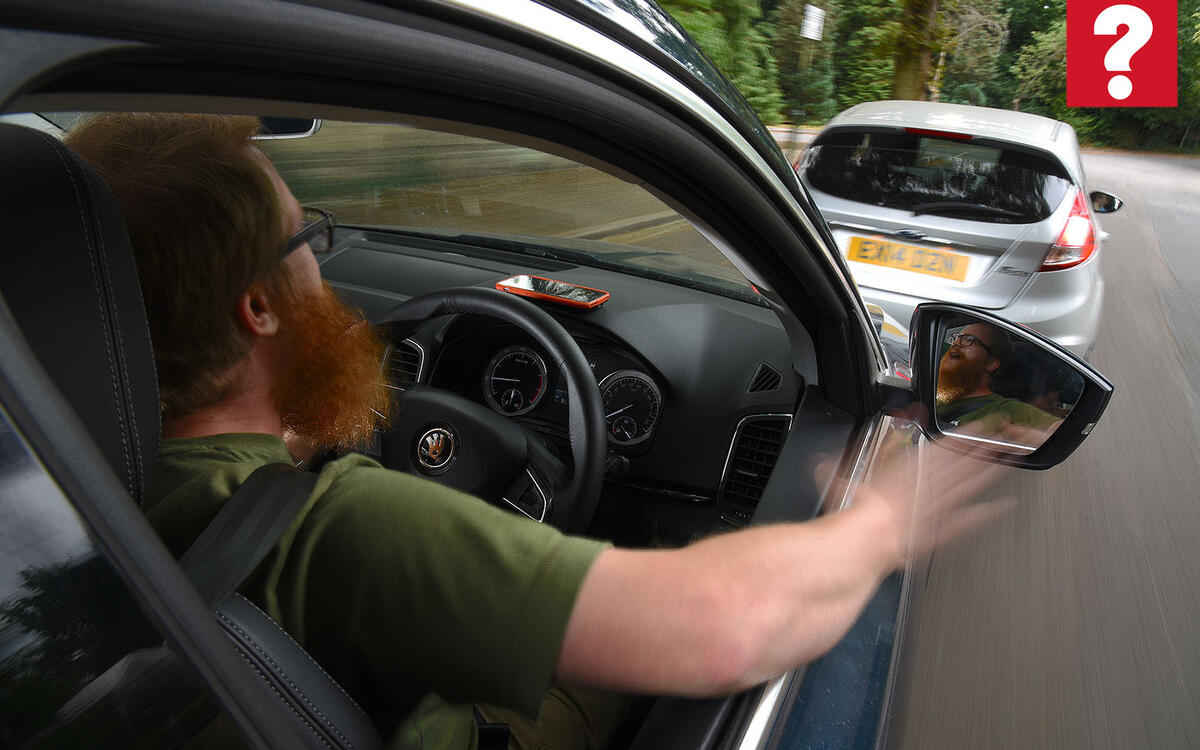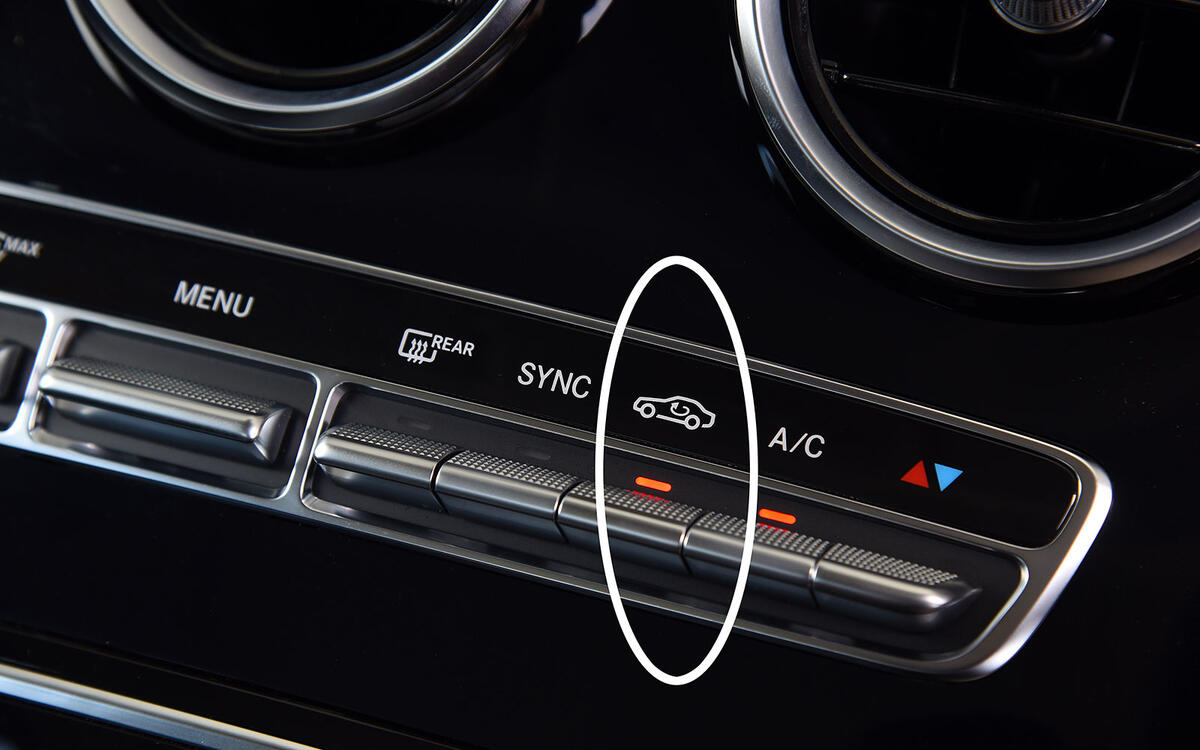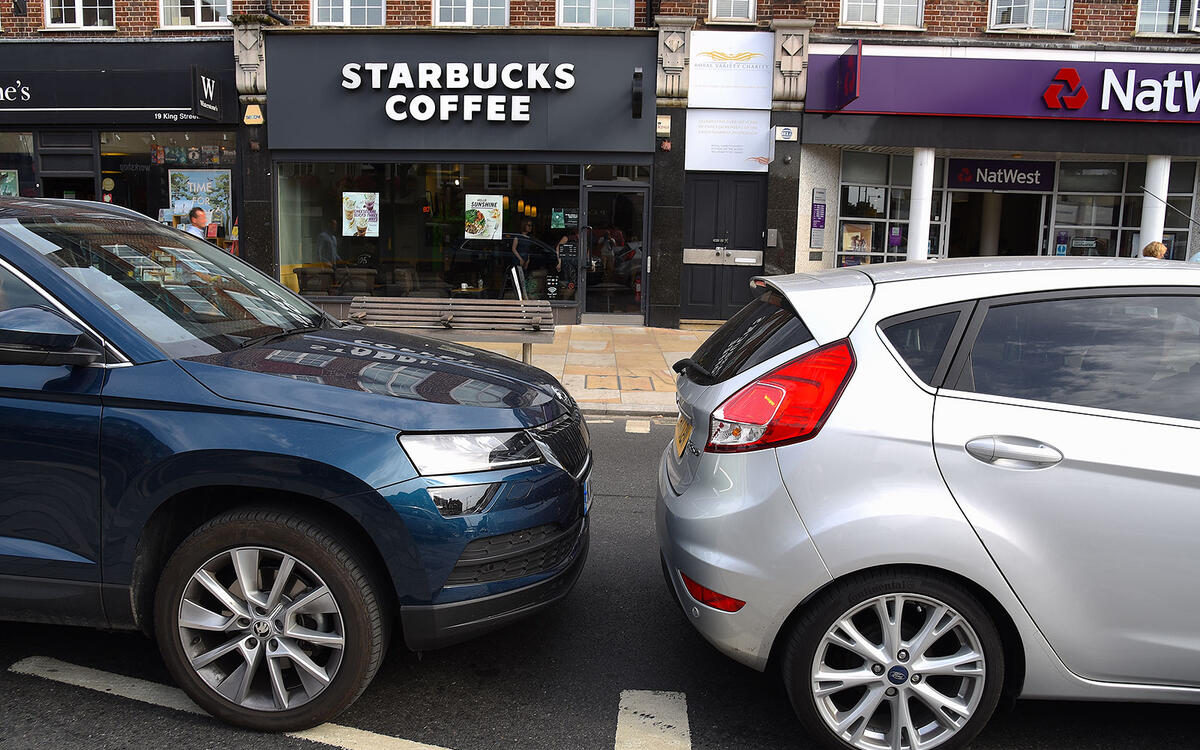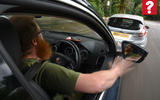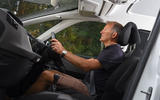 Slide of
Slide of
We’re afraid to say that you may have been driving the wrong way for all these years.
But you’re far from alone. Here’s the What Car? guide to common motoring errors, and how to easily fix them:
 Slide of
Slide of
1: Incorrectly using the ventilation recirculation button
You may have a vague idea that this is the button you press (circled here) when you’re trailing behind a 2003 Ford Transit van belching black smoke behind it like it’s the Emma Maersk. And this would indeed be the right thing to do. But you shouldn’t use it in winter after entering your car, because it will take a lot longer to de-fug the windows.
But you should use it at least temporarily on hot days at start-up because it will get the temperature down the quickest. And while we're on the subject, on a hot day lower all the windows to allow the hot air out of the car before first setting off; then close them after a few minutes to get the full benefits of your air conditioning.
 Slide of
Slide of
2: Not using the parking brake with automatics
Even some modern automatic gearboxes don’t automatically engage the parking brake when you engage Park and switch off the engine. But you always should use it, since relying on the gearbox entirely to demobilise what might be a heavy car on a hill puts it under a lot of stress it could easily do without.
Additionally, when you go on holiday and are driving that Fiat Grande Punto rental car around the hills of Italy, losing the habit of using the handbrake after you park your car could cause you a great deal of trouble.
 Slide of
Slide of
3: Not allowing a space of 3-4 feet in front of you in traffic
When pulling up behind another car in traffic, always allow a space of around 3-4 feet from the car in front. This allows enough space to always overtake them if they break down or become otherwise immobile.
 Slide of
Slide of
4: Not standing on the brakes when you really have to
If you need to stop quickly, stand on those brakes. Modern brakes are very powerful, and modern tyres are very effective in stopping you too. Let them do their work; don’t worry about locking-up – all cars sold since 2004 have anti-lock brakes (ABS) fitted as standard, and most have stability control and automatic wheel-brake distribution too, which will also help.
Many accidents occur not only because drivers don’t brake early enough, but also not hard enough. If your car has automatic emergency braking, even better – but don’t ever switch it off.
 Slide of
Slide of
5: Not using the steering-wheel mounted shortcut buttons
These were originally invented for safety reasons, not convenience. Once you get the habit of altering functions like the stereo through them, it will ensure you take your eyes off the road far less and you’re much less likely to have an accident.
 Slide of
Slide of
6: Not checking your tyres
This may sound like a simple one, but it’s something that’s so readily ignored, and yet your tyres are so important. After all, the only contact your car physically has with the road – whether it’s a sports car, a city car or an SUV – are those four small patches of rubber.
So, the law requires you to have 1.6mm of tread on your tyres. How to check? Just place a 20p coin into the main tread on your tyre. So long as the outer band is obscured, you’re good to go. Tyre makers recommend you check your tyre tread depth and your air pressure level once per month.
 Slide of
Slide of
7: Playing loud music
We’re all guilty of it. Your favourite song comes on the radio so you automatically crank up the volume. But did you know that playing loud music, while enjoyable, also has a detrimental effect on your ability to focus? This was demonstrated by research conducted by the Memorial University in Canada, which showed a direct link between a higher sound volume and reaction time.
Incredibly, when music was played at just 95 decibels (your average smartphone speaker is capable of over 100 dBA), reaction times increased by 20% across all participants. Additionally, loud music can also mask the noise of your engine, which can make judging your speed more difficult. So if you’re planning on going for a spirited country drive, make sure you turn the radio off.
 Slide of
Slide of
8: Ignoring the fact you’re in a blind spot
Being continuously in another driver’s blind spot on a multi-lane road can be perilous. Try to drop back or accelerate to remove yourself as soon as you can.
If it’s unavoidable - for example because there are cars close behind or in front of you - then a handy tip is to rest your hand on the horn (usually the centre of the steering wheel) so you can quickly remind the other car of your existence if they show any sign of trying to pull into your lane.
 Slide of
Slide of
9: Sitting incorrectly
If you want to be in control of your car, it’s absolutely vital that you find a good driving position. Now, your driving instructor may have led you to believe that the most ‘comfortable position’ is the correct one, but unfortunately that is not the case; we’ve all seen new drivers sitting far too close to the steering wheel.
 Slide of
Slide of
How to sit correctly
Thankfully, finding the correct position is fairly straightforward. In a manual car, you start by depressing the clutch to the end of its travel. Your leg should be slightly bent; if your leg is straight you need to move your seat forward. Once this is sorted, focus on your arms. You should be able to rest your wrists on the top of the steering wheel with your arms still slightly kinked. Use your reclining adjustor to tailor your position.
In terms of seat height, this will vary dependant on your own height, but ideally you should have an unobstructed view to all sides and all displays on the instrument panel. Finally, you should adjust the upper edge of the headrest to the same height as the top of your head so that you don’t risk whiplash in the event of a rear end shunt.
If done properly you should be able to reach the pedals, gear stick and steering wheel comfortably.
 Slide of
Slide of
10: Not looking ahead
Per mile, car drivers and occupants are nearly twice as likely to be killed on rural roads as on urban ones. Now that might come as a surprise to you, seeing that rural roads are significantly less busy than inner city thoroughfares. However, country roads present their own unique challenges - think varying cambers, hedgerows, narrow roads, blind crests and corners, and all often combined with generous 50- or 60mph speed limits. That’s why looking ahead and being able to read the road confidently is so important.
We can’t give you a full breakdown of how to read a country road (for that, we would suggest attending an Institute of Advanced Motorists course), but we can give you some basics:
 Slide of
Slide of
How to do it
Firstly, you should always be consciously trying to raise your line of sight: in other words, you need to look as far ahead as possible. Not only does this slow down the rate of objects coming towards you, it also forces you to anticipate the next bend. Remember the old adage: “look where you want to go”. Then, when you approach an unknown corner, you should visualise the line you need to take, using the vanishing point to judge when to get on the accelerator - i.e. holding a steady and comfortable speed through the bend until you can see the corner opening up.
For any cornering situation, it’s also important to be smooth with your controls so that you do not upset the balance of the car. This means selecting the correct gear before you enter the corner, braking in a straight line, and being gentle with the accelerator on the way out.
 Slide of
Slide of
11: Opening your door dangerously
You may open your car door without looking around you, but you’d be mistaken. Sure, you can take a glance in the wing-mirror to ensure the way is clear, especially of a passing cyclist who you may not be able to hear.
But you may miss them if they’re very close, in your mirror’s blind spot, and thus a dangerous accident can result. There were 474 such ‘dooring’ incidents in 2015 in the UK, and there was a fatality arising from one in 2013 in Leicester.
 Slide of
Slide of
The Dutch reach
Instead, employ the ‘Dutch Reach.’ Originating in the Netherlands in the 1960s, this method (corrected for right-hand drive cars in countries like the UK, South Aftrica, India and Australia) involves always opening the driver’s car door with your left hand, which forces the head to look directly to the side and towards the rear of the car, eliminating the blind spot, and allowing for full visibility of the immediate area.
This very important practice is a required section of the Netherlands driving test, and is even taught in Dutch schools. Pressure group Cycling UK is lobbying the government to do the same for Britain. Time for you to get ahead of the game.
 Slide of
Slide of
And finally
You may have been doing all this stuff already – if so, our congratulations. But please do finally remember the wise words of automotive writer Tom Vanderbilt, as he wrote in his 2008 book Traffic: Why We Drive the Way We Do:
“There is a simple mantra you can carry about you in traffic: When a situation feels dangerous to you, it's probably more safe than you know; when a situation feels safe, that is precisely when you should feel on guard. Most crashes happen on dry roads, on clear and sunny days, to sober drivers.”
Most of us make these errors - but our tips will improve the way you drive, quickly and easily
Advertisement

